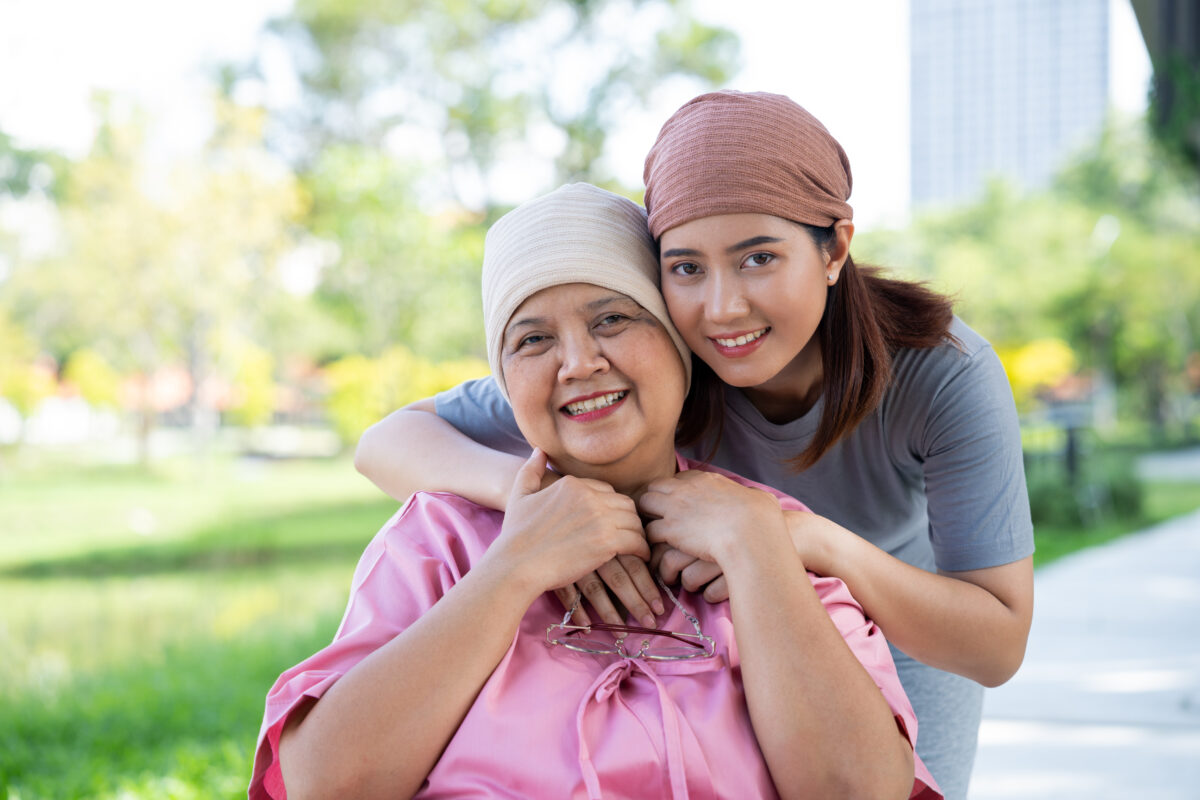If you have cancer or know someone who does, chances are good you know about cancer-related fatigue, or CRF. In fact, you might be experiencing it right now.
If so, it’s important to know that CRF is common and that there is help. But what is CRF? It’s a feeling of extreme exhaustion that doesn’t go away with normal rest. It can affect your daily life in many ways, whether you were just diagnosed with cancer, are in treatment, or had treatment months or even years ago.
New whole person health guidelines can help
The American Society of Clinical Oncology (ASCO) and the Society for Integrative Oncology (SIO) reviewed 10 years’ worth of results from randomized controlled trials, the highest quality type of research study. Based on their findings, these organizations just released new guidelines on managing CRF.1 Here’s what you need to know.
Proven Ways to Manage Fatigue
The guidelines recommend several whole person health ways to manage CRF. Since the research that ASCO and SIO experts reviewed included people during cancer treatment, afterward, and at the end of life, we’ve divided this guide ways into separate groups.
During Treatment
- Exercise. Regular physical activity is one of the best ways to reduce CRF. It doesn’t have to be intense; even light activities like walking can help. You might want to read our article “Can I Exercise When I Have Cancer?”
- Cognitive behavioral therapy (CBT). This type of therapy helps you change the negative thoughts and behaviors that can make fatigue worse.
- Mindfulness-based programs. Practices like meditation and mindfulness can help you manage stress and improve your energy levels. Learn more about these from our blog.
- Tai chi and qigong. These gentle exercises combine movement, meditation, and breathing techniques to help reduce fatigue. Try a tai chi session with Dr. Jonas.
- American ginseng. This herbal supplement has shown promise in reducing fatigue during treatment. Always talk to your doctor before starting any new supplement.
After Treatment
- Exercise. Continuing to stay active is crucial. It helps maintain your energy levels and overall health.
- CBT and mindfulness-based programs. These therapies are especially helpful for managing moderate to severe fatigue after treatment.
- Yoga. Combining physical postures, breathing exercises, and meditation, yoga can help improve both your physical and mental health. Learn how to recharge your mind and body with therapeutic yoga. You can find a certified yoga therapist through the International Association of Yoga Therapists.
- Acupressure and moxibustion. These traditional Chinese medicine techniques can help alleviate fatigue. Acupressure involves applying pressure to specific points on your body, while moxibustion involves burning an herb near the skin to stimulate these points. Acupressure can also be helpful for cancer-related pain.
At the End of Life
- CBT and steroid medications. For patients at the end of life, CBT can help manage the mental and emotional burden of fatigue. Steroid medications can help relieve physical fatigue.
You can probably skip…
The guidelines also note some approaches that have not been shown to work especially well for CRF. These include the supplement L-carnitine, antidepressant and stimulant medications, and medications that help you stay awake.
These may be helpful for conditions other than CRF, but in most cases, there simply isn’t enough evidence for CRF relief.
Because all medications have side effects and can interact with other medications and supplements, be sure to talk with your doctor before taking anything new.
How to Use These Recommendations
Here are some tips on how to use these recommendations to manage your fatigue.
Talk to your health care team. Discuss these options with your doctor, nurse, or therapist. They can help you decide which methods are best for you.
Start slowly. If you’re new to exercise or mindfulness, start with small, manageable steps. Gradually increase your activity level as you feel more comfortable.
Stay consistent. Regular practice is key. Try to make these activities a part of your daily routine.
Listen to your body. Pay attention to how you feel. If something isn’t working or is making you feel worse, talk to your health care team.
Find Your Approach
Here’s a simple chart to help you see which approaches work best and when.
| Whole Person Health Approach | During Treatment | After Treatment | End of Life |
| Exercise | ✓ | ✓ | |
| Cognitive behavioral therapy (CBT) | ✓ | ✓ | ✓ |
| Mindfulness-based programs | ✓ | ✓ | |
| Tai chi and qigong | ✓ | ||
| American ginseng | ✓ | ||
| Yoga | ✓ | ||
| Acupressure and moxibustion | ✓ | ||
| Steroid medications | ✓ |
Conclusion
Managing CRF can be challenging, but there are effective ways to help. By following the updated ASCO-SIO guidelines and working with your health care team, you can find the best strategies to improve your energy levels and quality of life.
Remember, it’s important to stay active, practice mindfulness, and seek support when needed. You don’t have to manage fatigue alone—help is available.
Reference
You may want to review the published guidelines or share this reference with your healthcare provider.
- Bower JE, Lacchetti C, Alici Y, Barton DL, Bruner D, Canin BE, Escalante CP, Ganz PA, Garland SN, Gupta S, Jim H, Ligibel JA, Loh KP, Peppone L, Tripathy D, Yennu S, Zick S, Mustian K. Management of Fatigue in Adult Survivors of Cancer: ASCO-Society for Integrative Oncology Guideline Update. J Clin Oncol. 2024 May 16:JCO2400541. doi: 10.1200/JCO.24.00541. Epub ahead of print. PMID: 38754041.
